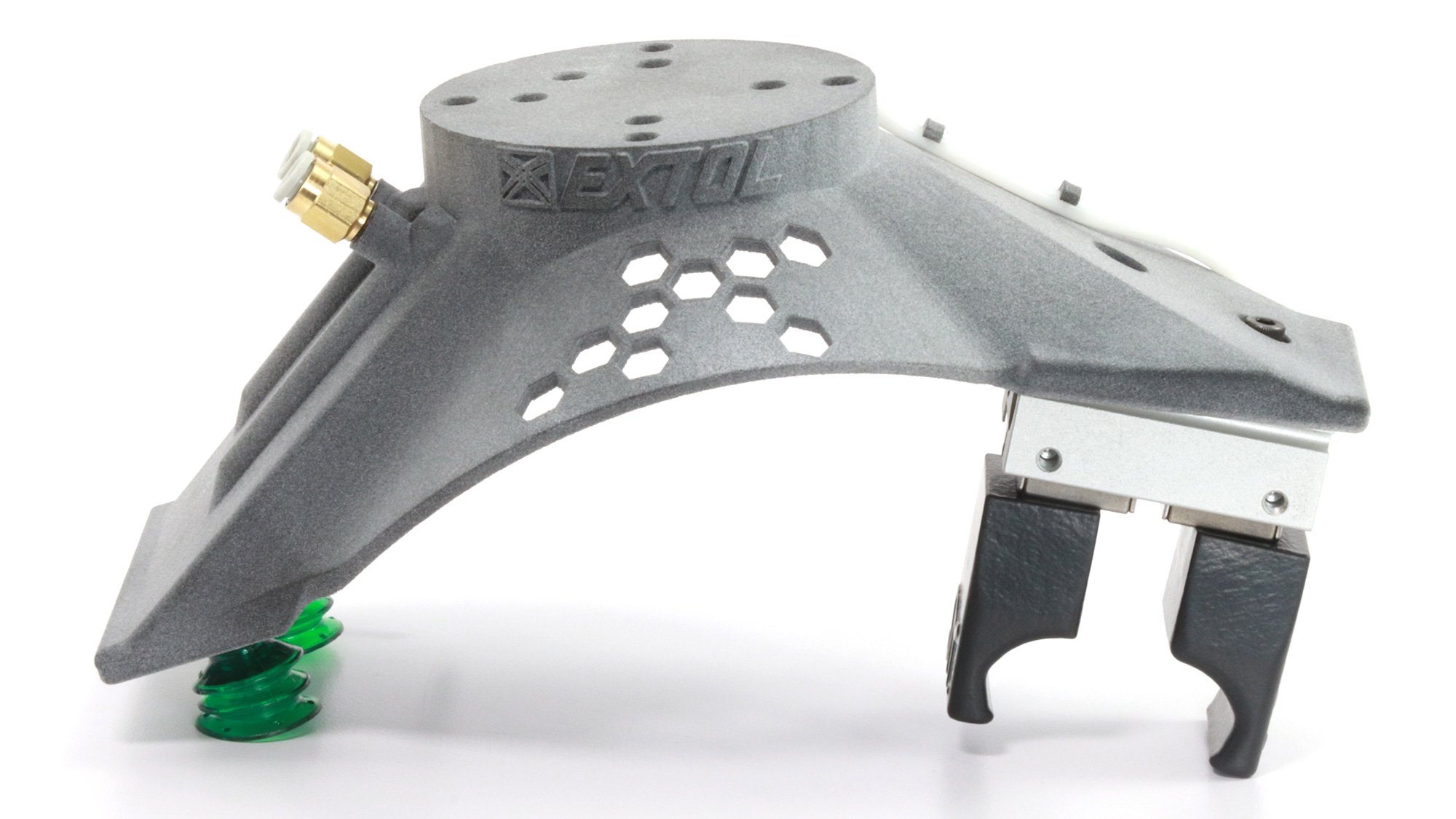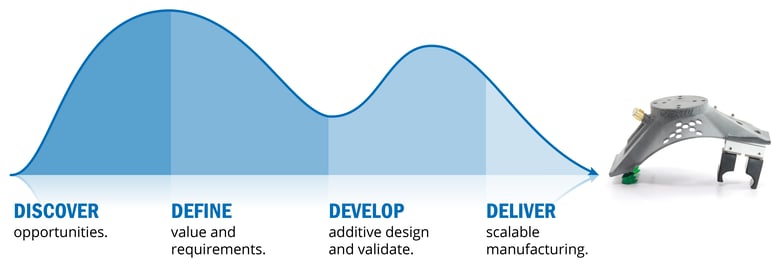4 Steps to Unlocking Innovation with 3D Printing
3D printing a single rapid prototype is now the accepted best practice for engineering and product development. But what if you want to take the next step to create even more value? How do you find and develop successful applications for functional prototypes and production?
As volumes increase to 10’s, 100’s, and 1000’s, the cost of 3D printing can become more difficult to justify. While it may take more effort, it also has the potential for a bigger payoff. Follow these 4 steps to unlock innovation and the full potential of 3D printing.
1. Discover opportunities.
Innovation starts with empathy. You plant the seeds of innovation by stepping back and recognizing the full context of an application.
Begin the process of finding opportunities for 3D printing by empathizing with people who touch the product in some way. Consider project managers, manufacturing line workers, product end-users, and others. What are their pain points? How might 3D printing help?
One of our favorite ways to discover insights is to complete a journey map of the application. We do this by first assembling a cross-functional team (engineering, purchasing, marketing, manufacturing, etc.). Then, on a whiteboard, we list the steps in the life of the product from design to manufacturing to end-use. Next, we note details about each step such as tooling investments, material costs, assembly labor, lead times, and pain points for the people involved. As we do this, the opportunities to create value with 3D printing literally become visible on the whiteboard.
This first step is key to building the foundation for a successful application. The more opportunities you find, the more ammo you have for justifying the cost of 3D printing in Step 2.
2. Define why 3D printing is a win over other manufacturing processes.
The 3D printing industry has graveyards full of cool applications that have been developed but will never be used. This is because the cost wasn’t justified over other manufacturing processes. We often see customers who race to complete technical development without ever defining why 3D printing will be a win. Don’t make that mistake!
Once you have a list of opportunities and pain points, narrow them down to the applications that have the best chance to succeed. You need to define two things for every application to determine the chance of success: (1) value proposition and (2) application requirements.
Value Proposition
Put into words why 3D printing will be a win over other manufacturing processes. Unless someone has given you a blank check, the value proposition always has an economic component. Here is one example: 3D printing will be a win if the part can be made for $16 each, eliminate $19,000 of injection mold tooling, and launch in 2 weeks instead of 12 weeks.
Here are several common value propositions for 3D printing. The more of these that apply to your application, the more value 3D printing creates.
- Eliminating tooling cost
- Faster lead times
- Reducing the number of components
- Reducing weight
- Reducing the cost of future design changes
- Reducing risk due to uncertain volumes
- Improving performance
- Achieving desirable functions for the end-user
Application Requirements
Document the requirements for each finished part, such as:
- Part function
- Strength
- Dimensional tolerances
- Lead time
- Color/Surface finish
- Part quantities
- Order frequency
At this point, you will have defined all the requirements for the application to be successful. Review the value proposition and application requirements. Identify any gaps between what you know to be achievable and what will need development and validation. Ask yourself if it is plausible to achieve all the requirements. If success isn't likely, you may want to rethink some of the requirements or move on to other applications. Otherwise, you've set the stage for the development work to do in Step 3.
3. Develop a solution that meets the value proposition and application requirements.
Before starting from scratch, check if someone has already created the solution you need. Reach out to manufacturing partners and industry experts. The 3D printing industry is progressing so quickly, that there are breakthroughs daily. You may save a lot of time and money by not reinventing the wheel.
For gaps that require a new solution, the best development plans are staged and iterative. They follow the process of ideate, prototype, test, iterate, and repeat until you find solutions. Attack the gaps in small increments to learn quickly and minimize development costs. For efficiency, try testing several alternatives in parallel.
In our experience, we like to start small by designing and prototyping only the portions of a part that we expect to be problematic. We start with small increments and build to a whole solution. This approach can drastically reduce the cost and calendar time of development.
Design for Additive Manufacturing is a central activity in Step 3. Designing for manufacturing is critical to the success of any manufacturing process, and the same goes for 3D printing. A great design for 3D printing considers things like printer utilization, post-processing, and repeatability.
4. Deliver a scaled and repeatable manufacturing process.
Before a 3D printing process is ready to scale, you need to prove that it is capable of consistently producing good parts. And since 3D printing is different than injection molding, you need to validate it in a different way.
The current reality of additive manufacturing is that there can be variation. Parts may vary between locations in a build, different builds, and different printers. Make sure you validate repeatability across all these variables. To do this, print parts, measure the critical characteristics, and make adjustments. You may need to tweak the part design, the printing process, or both.
Finally, you must document the process in a quality control plan and in manufacturing drawings specific to 3D printing. Now, you are ready for production!
Final Tips
As engineers, we are great at finding solutions. Still, it takes extra discipline to make sure that we are solving the right problem. Engineers naturally want to jump to Steps 3 and 4. Don’t make that mistake!
The seeds of innovation are planted in Steps 1 and 2. Jumping to Steps 3 and 4 leads to only incremental improvements, and not true innovation. Albert Einstein described it this way, “If I had an hour to solve a problem, I'd spend 55 minutes thinking about the problem and five minutes thinking about solutions.”
Where do you spend most of your time?
Extol has formalized these 4 steps into our Digital Development Program™. We use them to guide our customers as they drive innovation with 3D printing.
You are free to follow these steps on your own or let us help you. Either way, we love to see innovation unlocked with 3D printing!
Connect with me on LinkedIn to discuss more about innovation and 3D printing.


